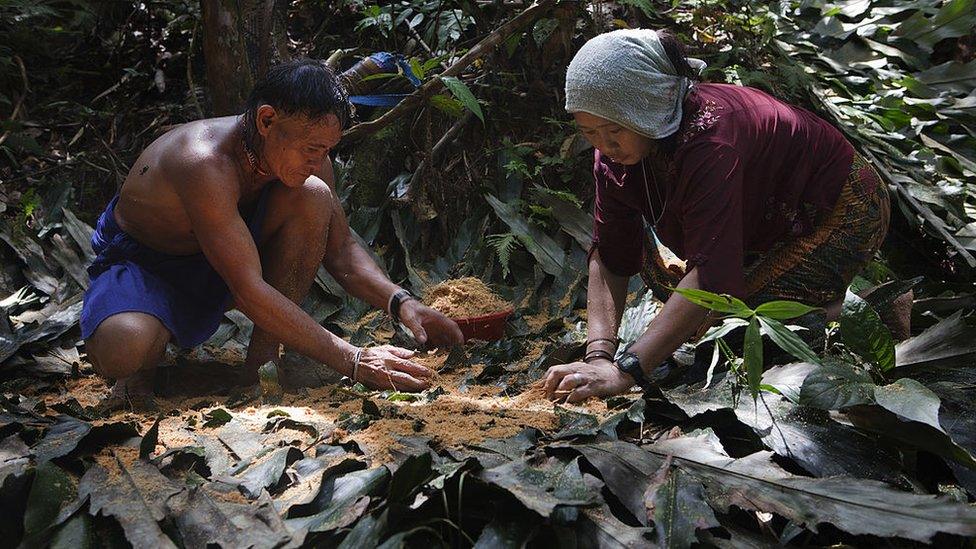Humans, mammals and birds share key behaviours, according to new study
- Published
- comments

Penan hunter-gatherers, a nomadic aboriginal people living in Sarawak and Brunei, were one of the groups examined as part of the study
Hunter-gatherers - which is a term used to describe humans who tend to move around and forage for food - hunt, have children and and socialise in similar ways to the animals and birds that live around them, according to new research.
The study shows that the environment they live in plays a huge part when it comes to how human and non-human populations behave.
Researchers looked at data from more than 300 locations right across the world where humans forage for their food and studied how they behave - along with the behaviour of the mammals and bird species living in the same environments.
And they found that inmost cases, humans acted in the same ways as most non-human species living in the same place.
Where you live affects how you behave
The behaviours of 339 human hunter-gatherer populations were assessed to see how they compared to non-human populations
"This is the first time a broad comparative perspective has been used to... compare very different species - humans, mammals, and birds - across a wide range of behaviours. "said Dr Toman Barsbai from the University of Bristol.
"Our evidence shows how remarkably... consistent the effect of the local environment is on behaviour.
"The similarities are not only present for finding food, where we might expect (it) but also for reproductive and social behaviours,"
Comparing human and non-human
A boy from the Bayaka tribe climbing a papaya tree foraging for fruit
The research used a database that provided lots of information about the behaviour of 339 human hunter-gatherer populations living in diverse environments around the world.
For each of the human populations the scientists examined, they also identified all the mammal and bird species that lived within a 25km radius.
They then identified 15 human behaviours for which they had data for the non-human species so they could be compared.
Do your neighbours eat like you?
A man from the Hadza tribe stalking for prey
In some environments, humans get most of their calories from hunting and the study found that in these locations, there are much larger proportions of mammals and birds that eat meat, in comparison to other places.
Similar links were found when it came to reliance on fishing, how far people travelled to gather food, whether they chose to store food and whether they decided to migrate between different seasons.
There were also large differences across populations for at what age people have children. In places where humans have children later, the local mammals and birds are also on average older when they first reproduce than the mammals and birds living where humans have children earlier.
- Published22 October 2019
- Published14 January 2021
- Published7 November 2020
